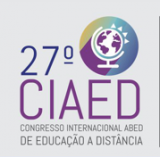CIAED - ABED: the trade show
Distance Education models, how to avoid instructionalism and privilege creativity?
The growing importance of Distance Education (DL) in Brazil's educational scenario raises several fundamental questions for those involved in its development. Among them is one that, polemically, asks about the advantages and disadvantages of distance learning and teaching models that are not the product of government regulation, which usually generates constraints on the creativity of those producing a course or program, but rather the result of the practical experience of the community of educators and other professionals involved.
For almost a century, the passenger car, internationally, has had four wheels - this is its "dominant standard", although initially the market offered models with fewer or more wheels. In distance learning, there is still no model whose design is identified, with the proof of adequate research, as the most effective possible, taking into account issues such as the complexity of the subject to be studied, the academic maturity, the number of students involved, and the flexibility, sophistication and availability of the technology to be employed.
The creation of an ODL course today, when so many resources are available to the professionals in charge of producing it, is very similar to the work of the composer of an orchestral symphony, who has at his hand the inclusion of sounds from instruments such as strings, woodwinds, and percussion, in varying volumes of sound and speeds of time. The quality, sophistication and innovation of the music will depend on the conceptions present in the composers and musicians, and shared authorship - including with the audience - is increasingly recommended.
